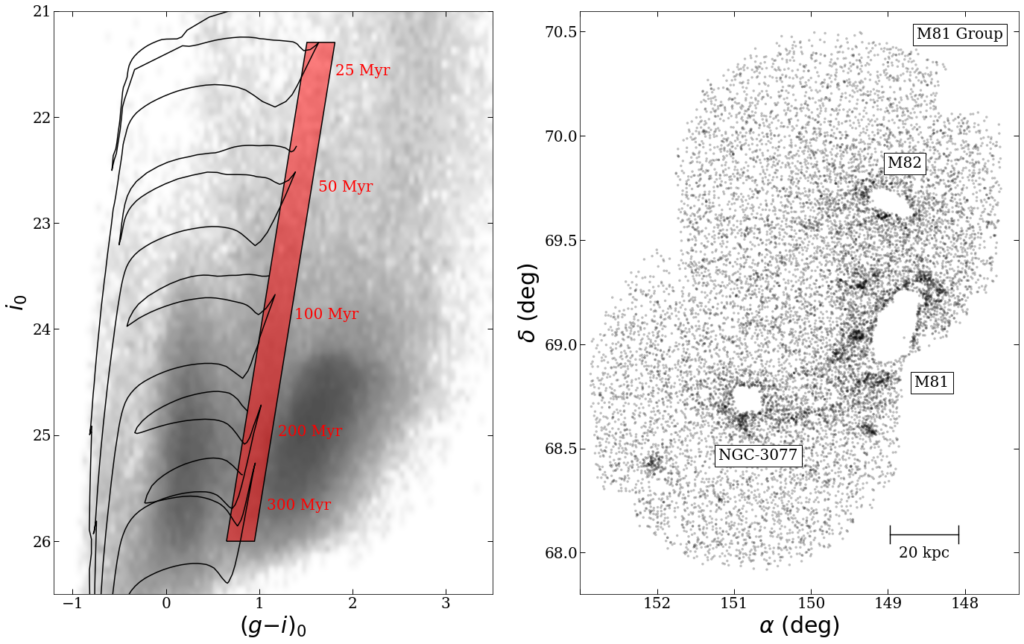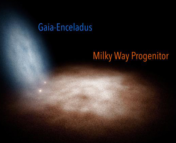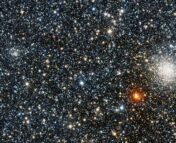The Undergraduate Research series is where we feature the research that you’re doing. If you are an undergraduate that took part in an REU or similar astro research project and would like to share this on Astrobites, please check out our submission page for more details. We would also love to hear about your more general research experience!
Michael Messere
University of Michigan
Michael Messere is an undergraduate at the University of Michigan, where he is studying Physics/Astronomy with a Space Engineering minor. This research was supervised under Professor Eric Bell and Dr. Adam Smercina from the University of Michigan Department of Astronomy. More details can be found in the poster presented at the 237th American Astronomical Society meeting.
Astronomers within my research group at the University of Michigan are galactic detectives that often ask themselves What exactly did the galaxy eat? When two or more galaxies come in close enough proximity to each other, the galaxies exert a gravitational tug on one another and are brought closer and closer together. This can often lead to the galaxies shredding each other apart or even completely consuming smaller ones. Despite the fate of the incoming galaxies, there will always be crumbs of evidence left over in the aftermath. These crumbs are the individual stars scattered about the outskirts of galaxies from past gravitational interactions with other galaxies. This diffuse region of stars around galaxies is known as the stellar halo and reflects how these galaxies have evolved over time.
The M81 Group, for example, is a well recognized triplet of galaxies located in the Northern sky in the constellation Ursa Major and is located at an incredible distance of 12 million light years. This means that the light that is reaching our eyes when we view the M81 Group is from 12 million years ago! The M81 Group is the nearest ongoing triple-interacting galaxy system with a stellar halo littered with gas and stars from recent interactions between the three main galaxies – M81, M82, and NGC-3077. The triplet of galaxies interacted with one another around 300 million years (Myr) ago and is a prime subject for understanding the stellar halo in-between significant merger events. As astronomers interested in figuring out how the M81 Group interacted in the past, the star-filled stellar halo of the M81 Group was the perfect place for my research group to put our detective magnifying glass over, or for this research, our telescope.
The Subaru telescope on Mauna Kea in Hawaii was used for two nights of observation of the M81 Group and after some data reduction, enabled us to look at the individual brightnesses and colors of stars within the stellar halo. Stars that are at different ages, masses, and burning different elements at their cores will appear in different locations when these brightnesses and colors are plotted. This is known as a color-magnitude diagram (CMD) in astronomy. Isochrones (iso = same, chronos = time) can then be plotted on top of the CMD to show the theoretical location of stars with the same age. We were specifically interested in a subpopulation of stars that burn helium in their core since they cover an age range spanning the past 300 Myr. This allowed us to use these stars to probe the question: How did the M81 Group interact and evolve during the past ~300 Myr since the significant tidal interaction between M81, M82, and NGC-3077? The selection bin of helium burning stars and isochrones is shown in the CMD on the left in Figure 1.
One interesting finding in these helium-burning stars was the observation of a tidal bridge between M82 and NGC-3077 that hadn’t been previously discovered as shown below on the right-side of Figure 1. The age of the stars that compose this tidal bridge is approximately 200-300 Myr and this age matches the previously estimated time of a merger between the three galaxies. This tidal bridge further suggests that M82 and NGC-3077 were in fact previously interacting. In order to form a tidal bridge as extensive as the one between M82 and NGC-3077, it is possible that the two galaxies fell into M81 as a pair 300 Myr ago and the resulting gravitational interactions resulted in this extended stellar feature. This is how the small and large Magellanic clouds are thought to have fallen into our own Milky Way galaxy, too!

Figure 1. Left: The color-magnitude diagram of the M81 Group from the Subaru telescope with the helium burning star selection bin in red. Isochrones in black show that the range of helium burning stars used spans the past 300 Myr. Right: The spatial distribution of the helium burning stars within the color-magnitude diagram. The tidal bridge extends between NGC-3077 and M82 and contains stars approximately the same age as when the three galaxies are expected to have undergone a major tidal interaction 300 Myr ago.
Astrobite edited by: Jamie Sullivan




